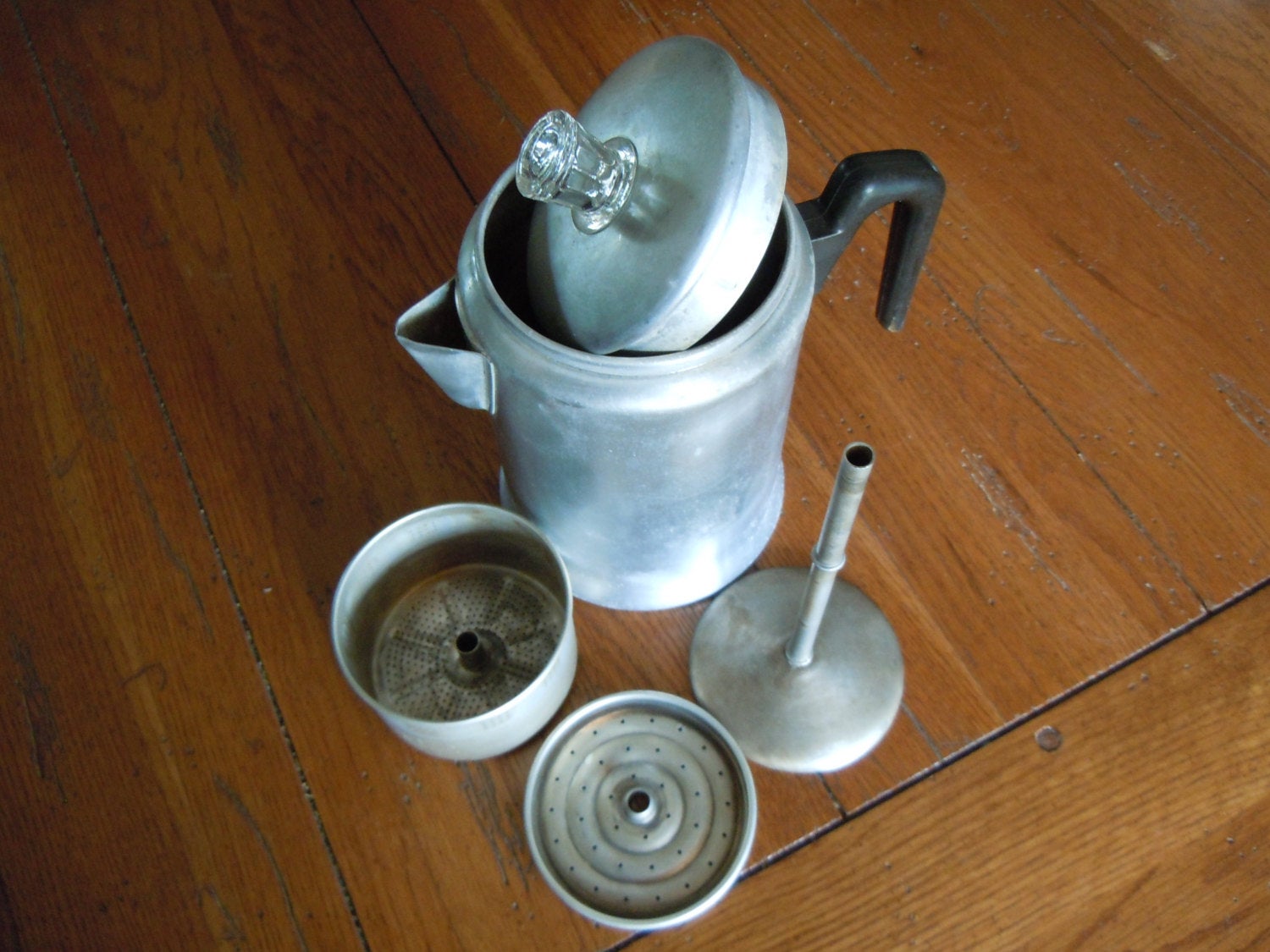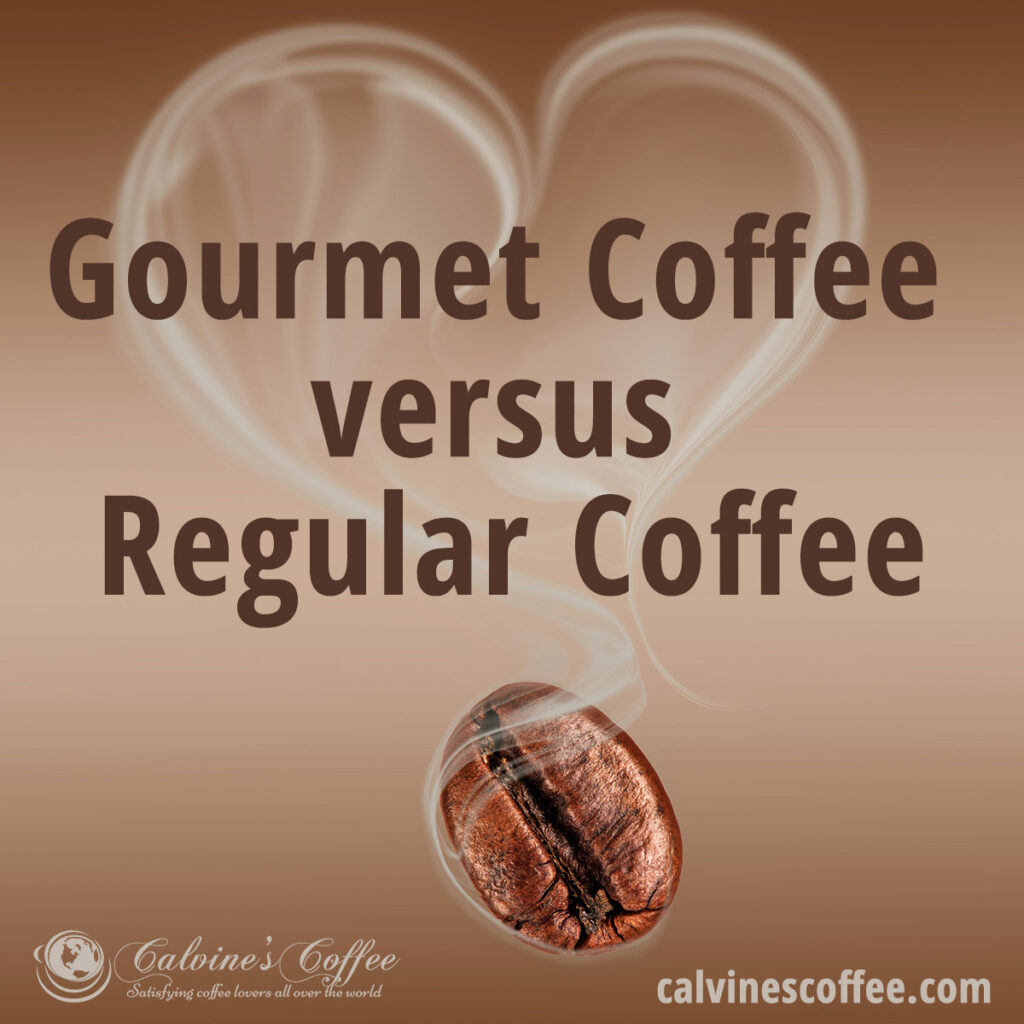A coffee percolator is a type of pot used for the brewing of coffee by continually cycling the boiling or nearly boiling brew through the grounds using gravity until the required strength is reached.
Percolators often expose the grounds to higher temperatures than other brewing methods, and may recirculate already brewed coffee through the beans. As a result, coffee brewed with a percolator is particularly susceptible to over-extraction. However, percolator enthusiasts maintain that the potential pitfalls of this brewing method can be eliminated by careful control of the brewing process.
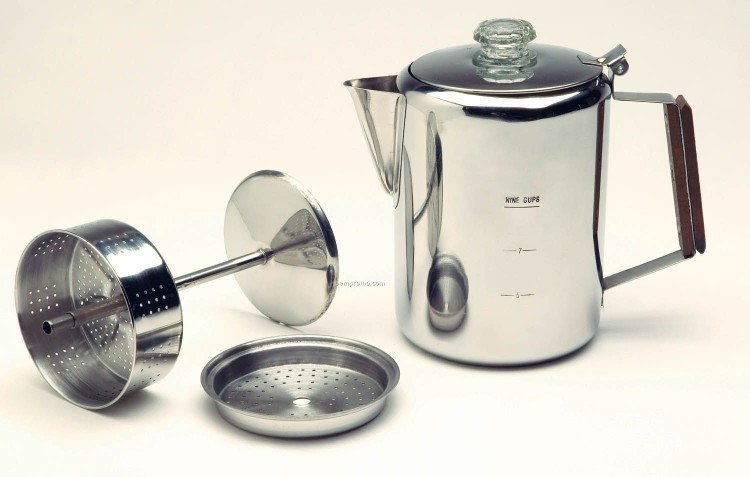
A coffee percolator consists of a pot with a small chamber at the bottom which is placed close to the heat source. A vertical tube leads from this chamber to the top of the percolator. Just below the upper end of this tube is a perforated chamber.
The desired quantity of water is poured into the water chamber of the pot and the desired amount of a fairly coarse-ground coffee is placed in the top chamber. It is important that the water level be below the bottom of the coffee chamber.
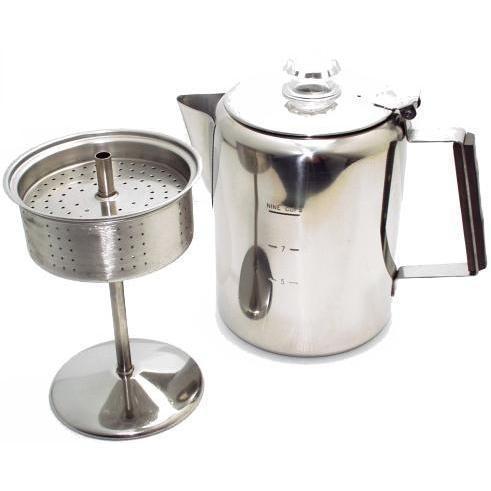
The heat source under the percolator (such as a range or stove) heats the water in the bottom chamber. Water at the very bottom of the chamber gets hot first and starts to boil. The boiling creates bubbles that are directed towards the vertical tube, pushing water up and out the top of the tube in a process similar to the principle behind an airlift pump (although an airlift pump relies on a compressed air source). From the top of the tube, the water flows out and over the lid of the coffee chamber. Perforations in the lid distribute the water over the top of the coffee grounds. The water then seeps through the coffee grounds, extracting water soluble substances they contain, then through the bottom of the coffee chamber. From there the freshly brewed coffee drops into the bottom chamber, mixing with the liquid therein. This whole cycle repeats continuously.
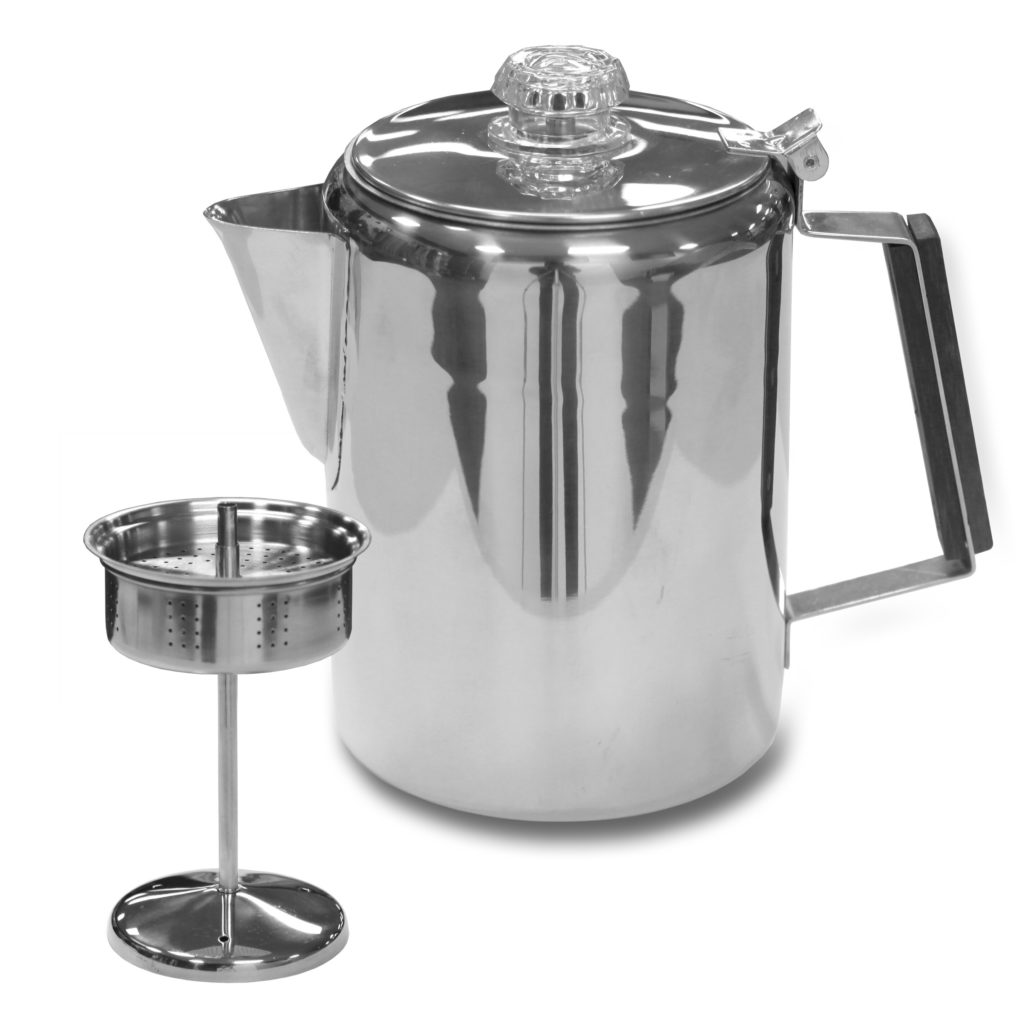
As the brew continually seeps through the grounds, the overall temperature of the liquid approaches boiling point, at which stage the “perking” action (the characteristic spurting sound the pot makes) stops, and the coffee is ready for drinking. In a manual percolator it is important to remove or reduce the heat at this point. Brewed coffee left on high heat for too long will acquire a bitter taste.
Percolators are popular among campers and outdoors people because of their ability to make coffee without electricity, although a simple filter holder can also be used with boiled water poured from a pot. Non-pressure percolators may also be used with paper filters.
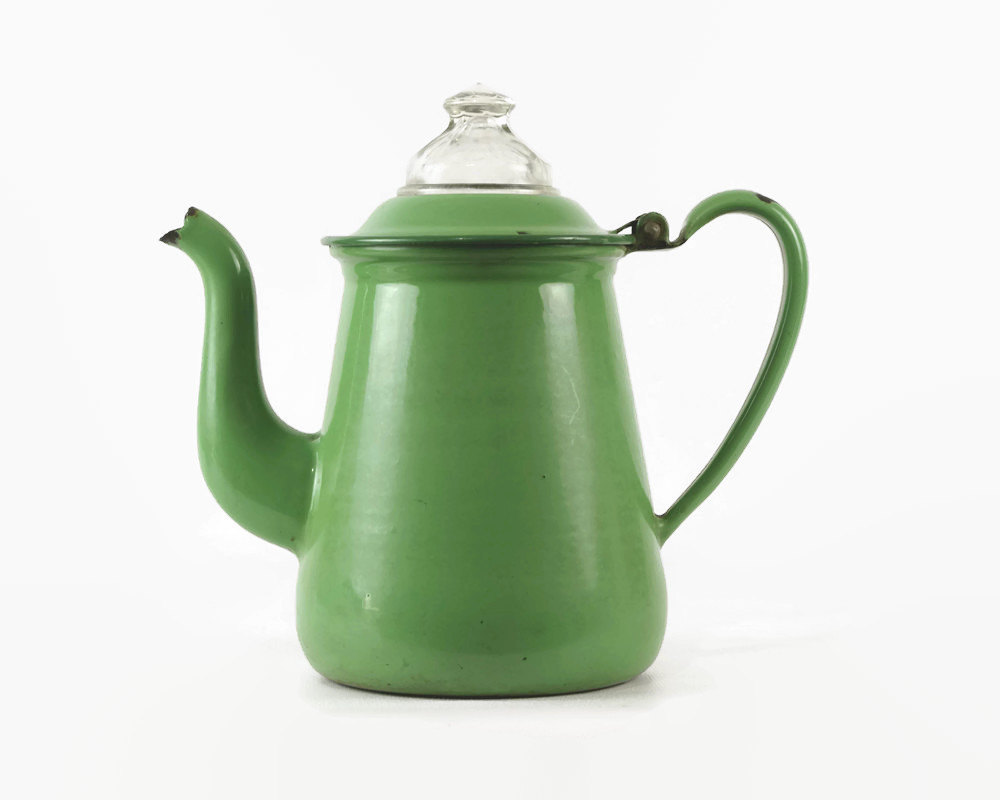
Calvine’s Coffee New Coffee Percolator.

